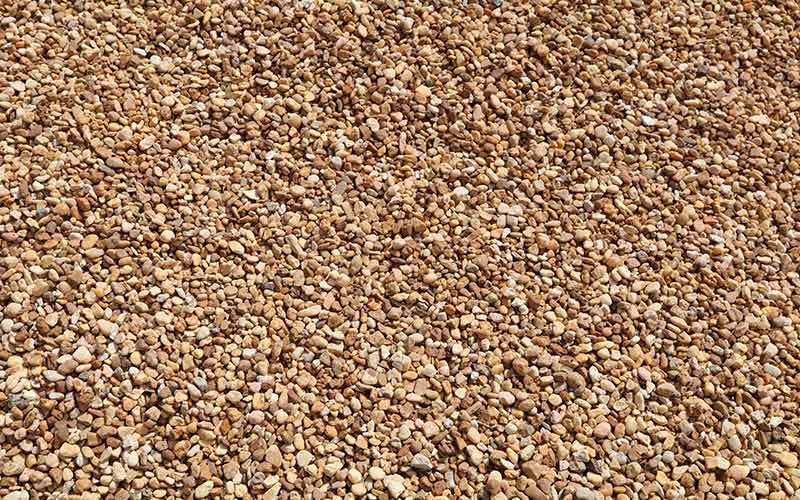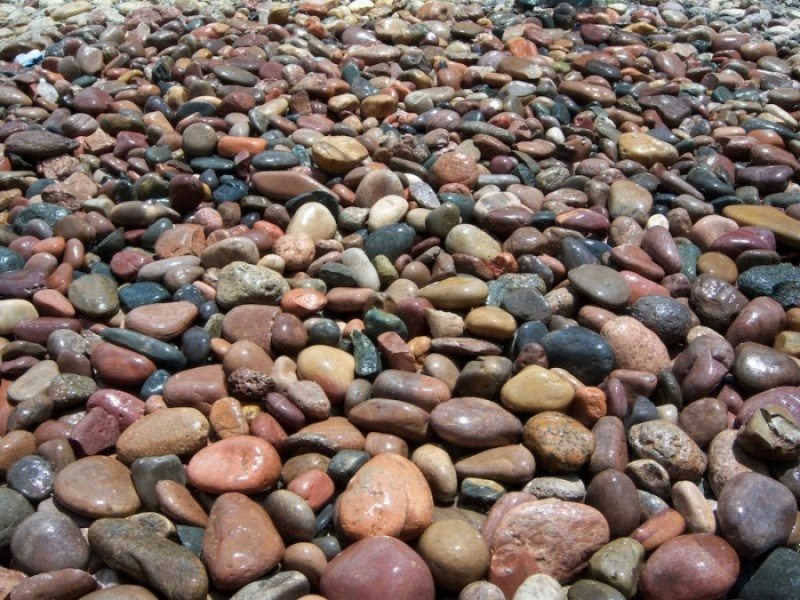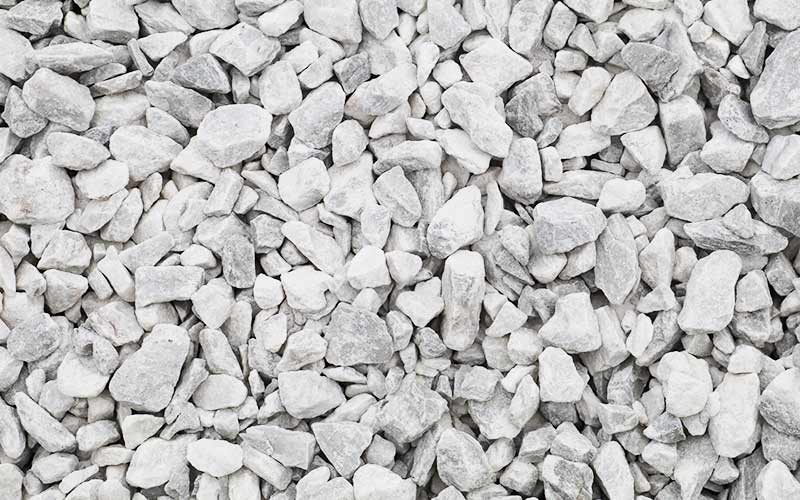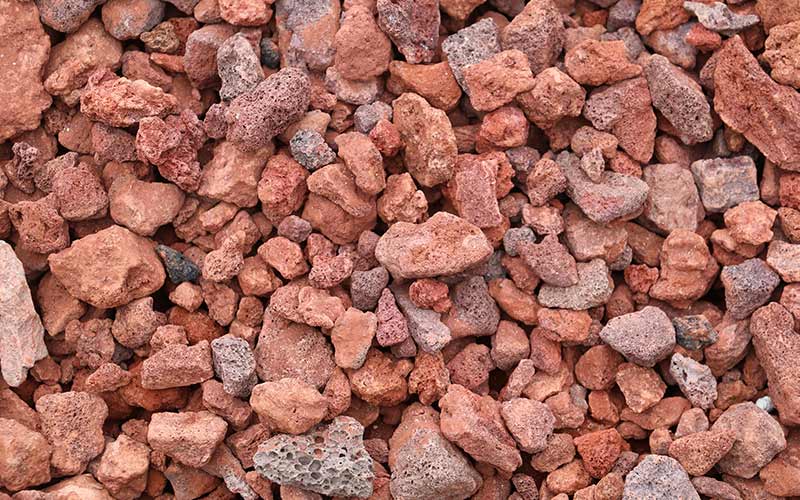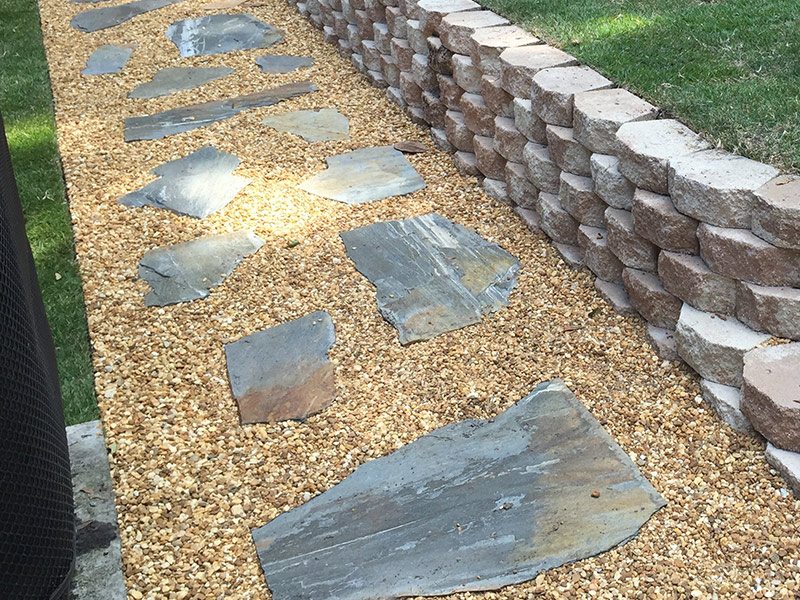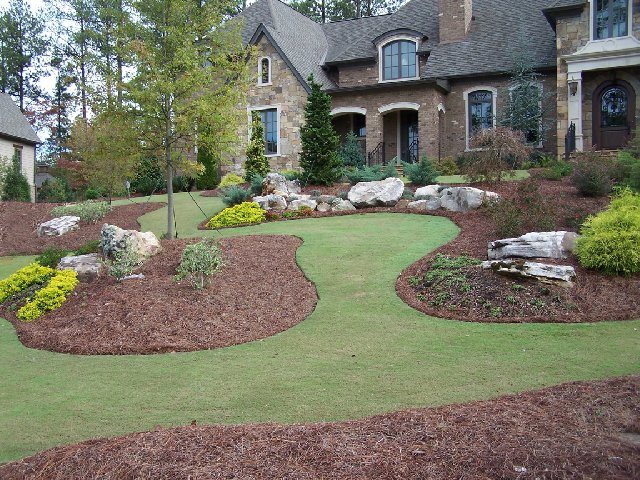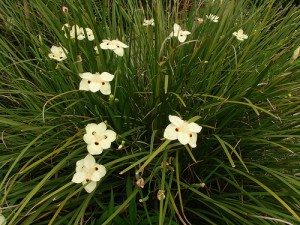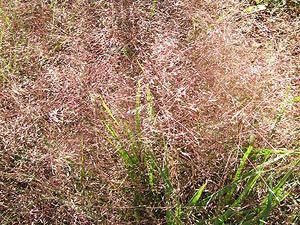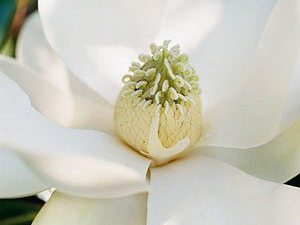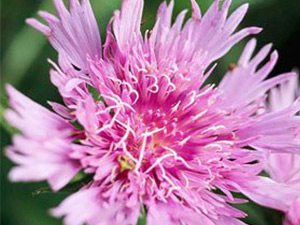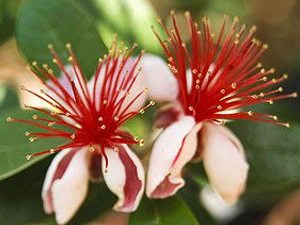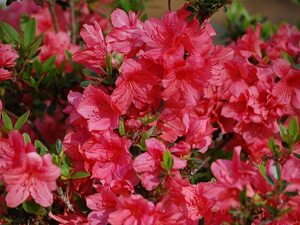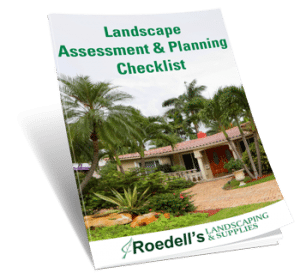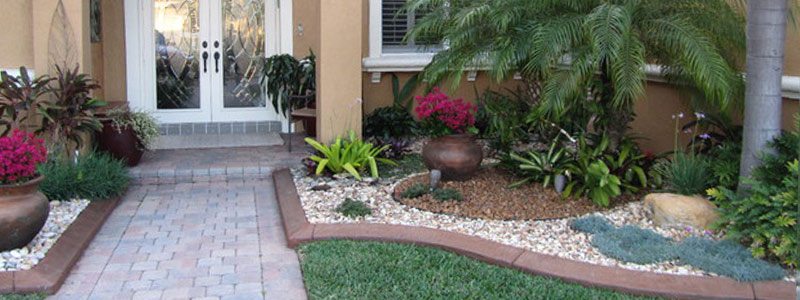
by Kenny Roedell | Jul 20, 2017
Using landscape rock is a growing trend in landscape design and an especially good one for Florida Landscaping. Florida’s heat and daily rains are a breeding ground for weeds. Rock beds are easier to keep weeds away, easier to maintain than mulch and they look great for years. Creating rock gardens are also a great way to beautify and enhance those areas that grass just won’t grow or are a great solution dealing with areas that tend to pool storm water. Using rocks in your landscape can really add diversity and interest to your landscape with all the variety of colors and textures you can get them in. However, there’s more than meets the eye when choosing the right type of rocks for your project.
Let’s look at the main types of landscape rocks and the considerations:
Pea Gravel is small rocks that are often referred to as pebbles. They generally have a smooth edge and come multi-colored. They are essentially the small fragments of rocks that rivers have plummeted into small pieces and polished up naturally.
Pea Gravel works well as a mulch replacement medium, especially in small areas. The natural tones make them a perfect color base to accent just about any decorative plants or even large stone focal points in your design. They also are perfect for large areas of ground cover, not to mention they are also easy on bare feet! However, when using small pebbles keep in mind you’ll want to use solid edging. Without edging, pea gravel has a tendency to spread and get into the lawn or on concrete surfaces like driveways and side walks. Without good edging, you’ll spend time sweeping or pushing the pebbles back into place.
River rock is like the big brother to pea gravel. It too is generally smooth but is larger in size. They also have more distinction in color overall. You can buy river rock in different colors: white, black, brown or a mixture. Sometimes they even have a marble like look.
River rock is a great replacement for mulch in larger, more visible beds. Although smooth, the size varies enough that they are not so great on the feet. However, the colors can be used to really accent areas. River rock can not only set-off decorative plants but also compliment your house and the overall look and feel of your landscape design. River rock is one of the most popular landscape rock used by landscape designers because of its versatility color. It works great as accent borders, along fences and walls or around a fountain or a large feature boulder. One tip though is river rock can be very heavy to work with. I would look for a supplier that can deliver and make sure you have a solid wheelbarrow.
Chipped rock is about the same size as river rock but it is actually larger rocks chipped down to this size. They don’t have smooth edges or have a polished look like river rock but chipped rock adds great texture to your landscape. Although you can choose from a variety of colors, it is usually sold in one color.
The most popular color for chip rock is white. You see it used a lot in Florida landscapes. The white color makes it a great base to set of flowery, colorful plants. It also works great in beds up close to the house or in pool areas. Just remember these rocks have some sharp edges so edging is important to keep them in place. Chipped Rock also makes for a great bed for low maintenance potted gardens, which works great for entryways like your front porch.
It’s called lava rock because it is actually lava from volcanoes, just broken down into smaller pieces. It comes in a variety of sizes but doesn’t have smooth edges. Lava rock is red and bold, making it great for accents. Lava rock is a great color tool when breaking up the typical green Florida landscape providing excitement and dimension to your landscape design.
Typically you wouldn’t use lava rock to replace mulch around trees and shrubs but for larger areas. In specifically design spaces or along the front of the house. In the southwest desert areas of the country, it’s used a lot as a base to create entire yards because grass doesn’t grow. If you ever go to Las Vegas or Phoenix you will see a lot of yards based around lava rock.
Unlike the other type of rocks we have mentioned so far, flagstone is not a replacement for mulch. It comes in much larger pieces of flat stone. It typically is available in a gray or brownish earth tone color.
Often you will see it used as stepping stone to build a pathway. Flagstone makes a great replacement to concrete sidewalks and attractive to use for well-traveled pathways through your yard so the grass doesn’t get worn out. It’s easy to install and maintain. You can even run a lawnmower right over them. They also work great for walkways through larger rock beds made of the smaller river rock or pea gravel. Flagstone also provides for beautiful, natural look small steps for those inclined areas of your yard. Flagstone also makes a beautiful natural looking retaining wall, but you will have to choose the right flagstone to use for that purpose and be able to cut or place the right pieces to make it work. I would recommend looking for a professional landscaper to help you build a flagstone retaining wall.
When we say “landscape rock” here we mean a big one! Boulders make for great anchor or center focal pieces for your Florida landscape design. Instead of a tree or large shrub under your living room window – use a boulder! They are interesting and obviously pretty easy to maintain. You can easily design a rock garden or an array of plants around them. They come in all sorts of sizes and colors. They are also great to use for the corner of your pool enclosure. Of course, boulders are huge and heavy and not easy to move around, so you will have to use a bit of vision when selecting a boulder.
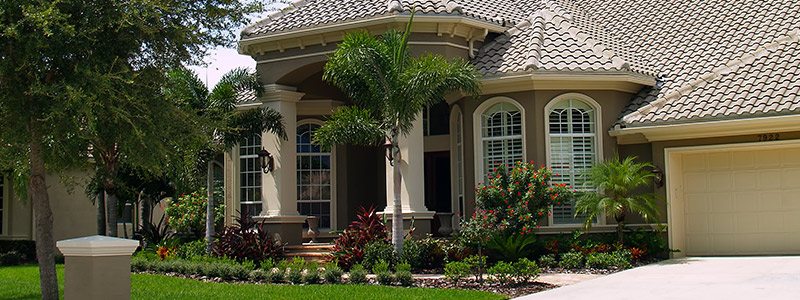
by Kenny Roedell | Jul 14, 2017
Welcome or Stay Away! What Does Your Front Yard Say?
Since Ancient Greece, the “portico” or front porch has always been a significant symbol of transition from a community outdoor and social space into the intimate indoor space of your home. It is an opportunity to create an image of elegance and warmth to welcome your guests and maybe encourage neighbors to do the same.
These front yard meeting and greeting spaces can set the vibe of your home and be welcoming or can run guests away quickly if awkward or unkempt front yards and entryways. This can be an overwhelming task at times here in Central Florida where summer heat is hot, humid and brutal with the sometimes challenging soil conditions and water restrictions. You may feel like your options are limited and why bother. But it’s not that hard!
5 Simple Florida Landscaping ideas or tips
to remember when designing your gorgeous welcoming area:
1) Create levels with different size pots to add depth and interest.
2) Design for visibility with a variety of color, texture, and form.
3) Direct view to front entry with focal plants.
4) Dress up driveways and always accent with lighting, stone or wood.
5) Get creative with larger spaces and create pathways to tucked away gardens and intimate areas.
Need Plant Ideas!
Most newly constructed home sites have very little shade while older homes may sometimes have an overabundance because of ancient old tree canopies. Here are some easy Florida landscaping ideas for the front of the house that allow you to embrace our Florida environment and keep your front areas warm, bright, colorful and tolerant of our hot Florida weather. Here are some examples.
For full sun areas, some examples of some great landscaping options are:
African Iris, Stokes Astor, Twin Flower Agave, Magnolia, Purple Love Grass and Pineapple Guava. These plants are sure to add some color and texture to your front space to provide impact and warm.
For shady areas try Azaleas, Bromeliads, Camellias, Ferns, and Gardenias.
Don’t forget my four favorites to add into the mix as well. You can find out what those are in my article Four Great Plants to Make Your Florida Landscape Design Beautiful. By The Way – as a shameless plug and as an Orlando landscape supply company, We carry many of these plants
For more general over all look ideas, check out this slideshow from HGTV.
Use these Florida Landscaping Ideas and combine them with your vision of what “Welcome” means to you, you can truly create your own design as a personal invitation into your home that will be complimented and remembered by all that visit year after year.
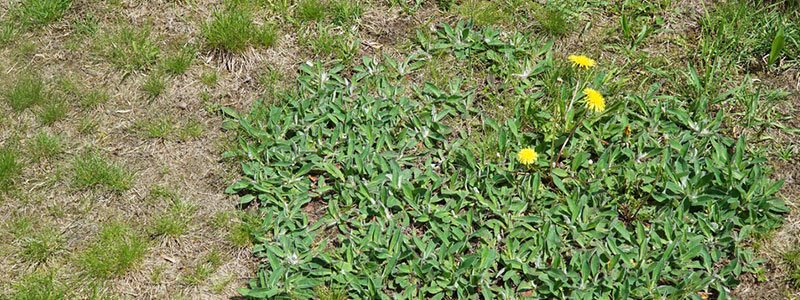
by Kenny Roedell | Jun 23, 2017
1) WEEDS
While grass and weeds can coexist to give you a nice green look, it is not usually the most pleasing appearance for a lawn. Typically weeds will grow faster and out of scale to the lawn. Many weeds also have a broadleaf look and can be a big reason why your lawn looks ugly! Healthy lawns generally take care of many weed problems by crowding them out. Weeds germinate at different times of the year and at different rates. The spring and early summer are when most of them start to grow. Weak grass or small areas of exposed soil are ideal spots for them to take hold and start attacking your lawn. Be sure to use a weed treatment early in the season. If your yard is overrun by weeds you can still save it by treating the weeds and fertilizing your grass. Make sure you have a healthy ph balance in your soil. This will help your sod grow healthy and strong and push the weeds out. You can get your soil tested for FREE at Leu Gardens in Orlando.
2) TOO MUCH SHADE
Although some are shade tolerant, most Florida grasses like and need the sun. Between your house or other structures and mature trees, your grass or sod may not actually be getting a full day sun. A full day of sun is more than 6 hours of direct sunlight. So that couple hours of sunshine you get under the tree in the morning when the sun is rising is probably not enough. While there are some grass varieties that handle some shade, they tend to be weaker, grow slower, less able to handle foot traffic and can allow weeds to take over if you’re not using a weed preventative. If the shade is an issue, make sure you have a shade tolerant grass or perhaps find a different type of ground cover for those areas. Mulch, rocks or gardens with plants, like jasmine, that stay beautiful with little requirement for light.
3) FOOT TRAFFIC
Even though some turfs are designed for play spaces and foot traffic more than others, the reality is that wet grass and primarily the soil does not tolerate foot traffic well. So on all those rainy Florida afternoons as people walk across your yard or your playing sports on it, the soil is getting compacted making roots difficult to grow. Aside from that, when the soil is soft, it is easier for individual blades of grass to be pulled out with wear and tear. If the grass is really dry, foot traffic can break blades that will turn brown and can stunt growth.
4) DOGS
We all love our canine companions, but they have to go out regardless of weather so there is no way to avoid them trampling out into the soft wet soil. Typically I see the worst destruction during the summer with Florida’s famous rainy season. Dogs generally follow a routine and their nails can wear a bald path into the soil on wet days quickly. Pattern behavior also has those spots were dogs like to do their business. Even on dry days dog urine is one of the worst stressors on your grass. It burns out the grass and eventually creates dead blank spots in the lawn.
5) LACK OF WATER
Besides sun, the other most important thing that grass needs to grow to be lush & green is WATER. While we all want to be conscious of the environment and not water their lawn every day, some supplemental water may be necessary at times. During those hot Florida days, water deprived areas, as well as new sod need additional water to survive. One of the most common water deprived, as well as sun-deprived areas are under trees. Trees not only absorb much of the water that reaches the ground, they block a good portion of the rain from even reaching the ground. This is a major contributor as to why grass naturally does not do well in those spaces, so if we are going to force something where it naturally does not do well, it will likely need some additional help, in this case in the form of water. Another thing to look at is water run-off. If your yard is on a slope the water maybe just running downhill faster than the soil can absorb it. If you want to know more about watering your landscape check out my article,”Don’t let the Summer Sizzle Kill Your Landscape”
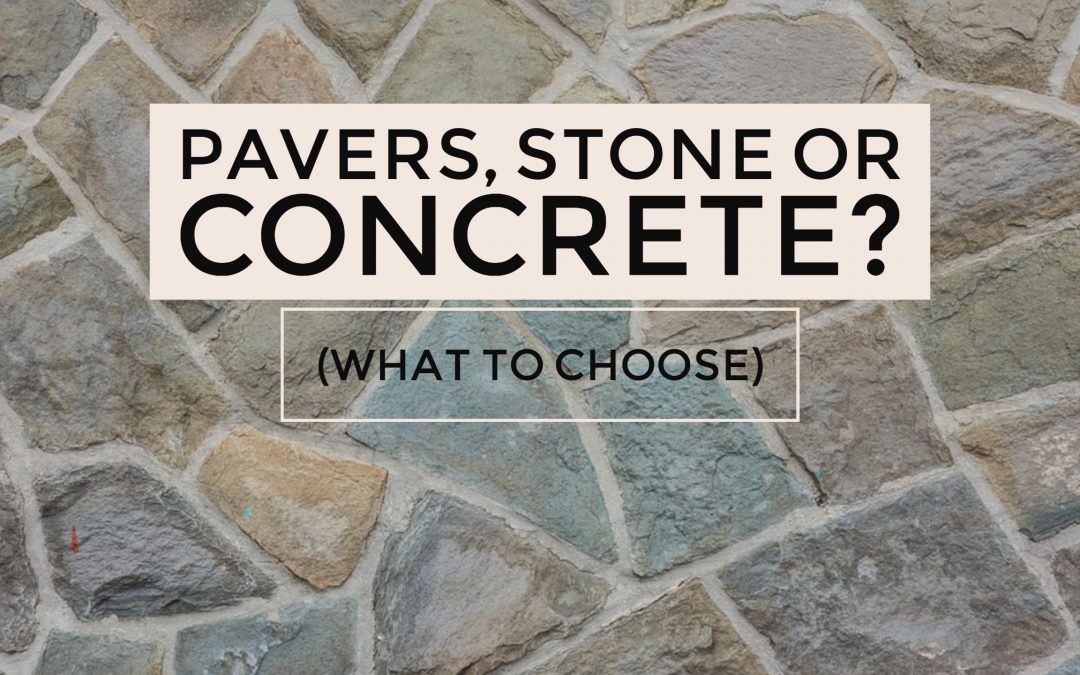
by Kenny Roedell | Apr 27, 2017
Choose Your Hardscaping Materials
Hardscaping your yard not only adds value to your home, but just as importantly, it can help you create a year-round at-home retreat here in Central Florida. And deciding what to use in your hardscaping projects is one of the decisions you’ll need to make.
Read on to learn about some of the pros (and cons) of various materials.
(more…)
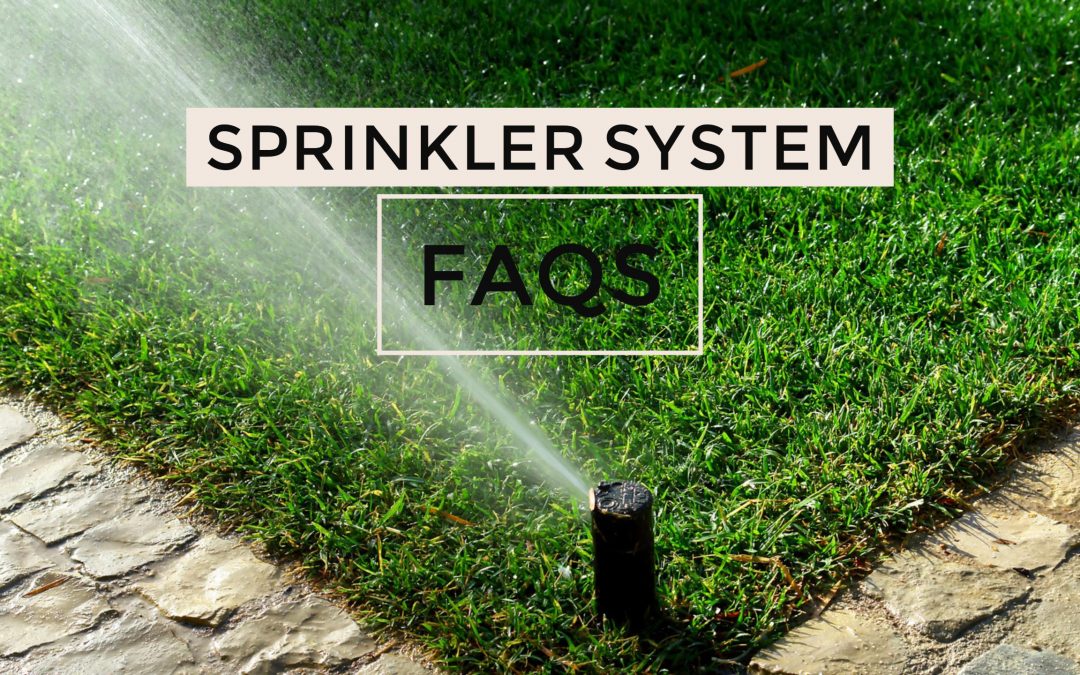
by Kenny Roedell | Apr 20, 2017
Many Florida residents already know the value of a sprinkler system, and if you’re not one of them, our sprinkler system FAQs can help educate you on commonly asked questions.
In our last post, we talked about common varieties of sprinkler systems. If you’re new to sprinkler systems, that article will provide an overview on the types of systems that are most commonly used. Next, I invite you to read about the most common questions I encounter when installing systems. If you can’t find the answer you’re looking for, feel free to contact me with additional questions, and I’ll try to help you.
Sprinkler System FAQs
1. How much will it cost?
This may be the most common question I get, and the answer, of course, depends on your property and its unique features. Sprinkler system installation price varies according to:
- the type and quality of system
- the size of your property (or the areas to be irrigated)
- your soil condition and slope, if you have any
- the number of zones I’ll need to install
It’s fair to say that prices start at around $2,000-$2,500. The average installed price is probably about $3,000-4,500. You really need to start off by getting an estimate. And when you do, make sure that you find out the name of the manufacturer of the system so that you are comparing apples to apples.
2. What’s a sprinkler system comprised of?
A sprinkler system consists of:
- piping to deliver the water
- heads to distribute the water
- valves that allow the water through the pipes
- a controller that activates each part of the system at specific times
3. How long does a system installation take?
Usually, it takes 1-2 days to install a typical sprinkler system.
4. How do you determine the number of zones needed for a sprinkler system?
Zones are simply the areas that require more or less watering or the areas that require watering at particular times. Zones can include:
- Extremely shady grass areas
- Sunny grass areas
- Shrubs
- Gardens
5. Is maintaining a sprinkler system hard?
Sprinkler system maintenance isn’t hard if you know what you’re doing. We’re happy to walk you through your maintenance steps or we can come out pre- and post-season to handle the maintenance for you. The City of Tampa has a great half-hour video on maintenance here. To winterize, we recommend having your system “blown out,” which removes water from the lines.
6. Will I save money by installing a system?
You can save up to 50 percent on your water bill if you’ve been irrigating by hand. Your savings will just depend on how frequently you water now and how effectively. You can save up to 100 percent of your time, too!
7. Is DIY installation recommended?
If you’re installing something simple, like a soaker hose, then, by all means, do that yourself! Installation of an underground system requires knowledge of plumbing and electrical. You’ll also need to figure out how much water you’ll need to apply to each zone and when. Doing it yourself can save you about half of what it would cost to have the system installed, with the caveat that you’ll need to figure out how to adjust your settings for maximum effectiveness.
8. As far as professional installation is concerned, what is the licensing requirement in the state of Florida?
Florida offers irrigation contractors a voluntary license that exempts the licensed contractor from local irrigation contracting licenses. Upon passage of the state test, and payment of a fee to the state, the individual receives the voluntary license.
If you’d like an estimate, feel free to contact us here.

